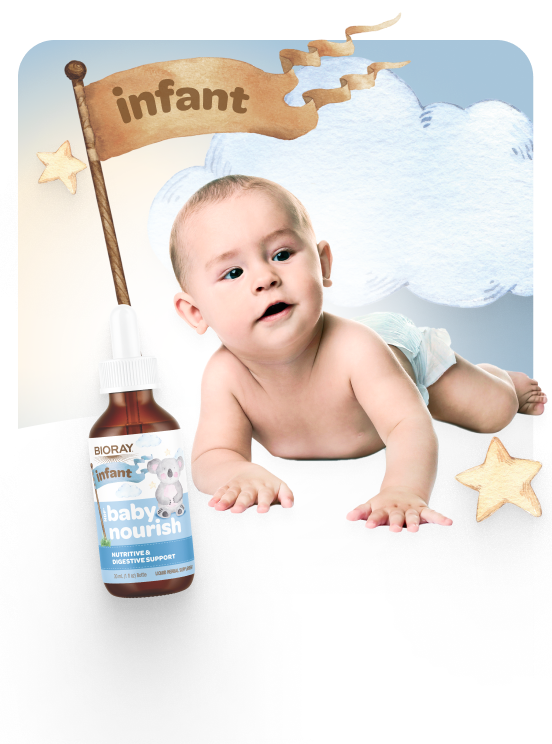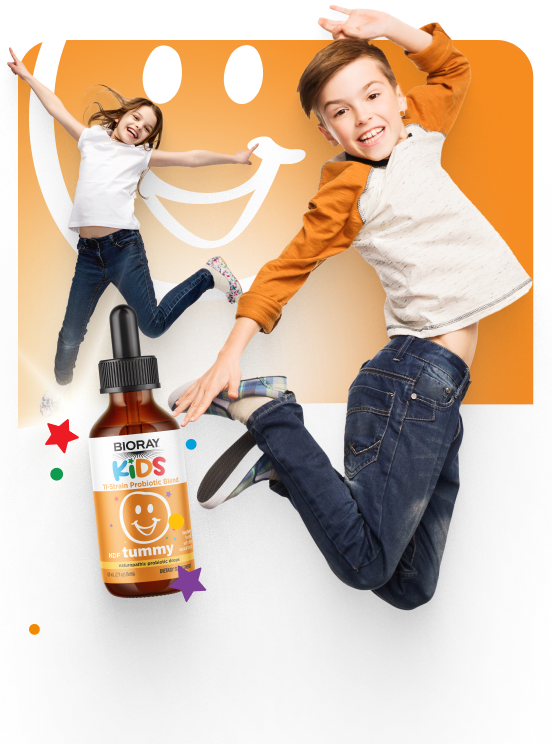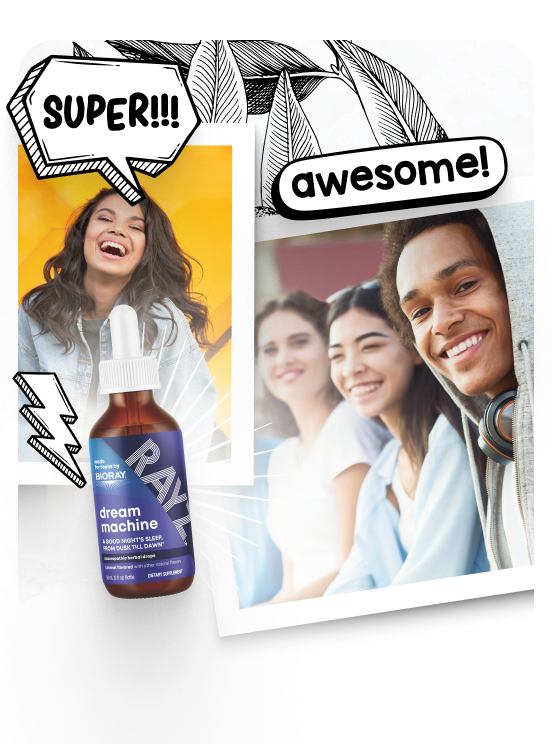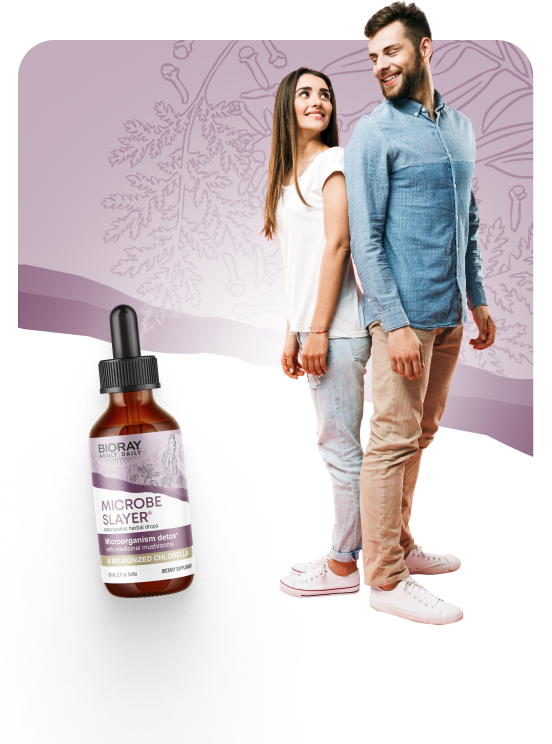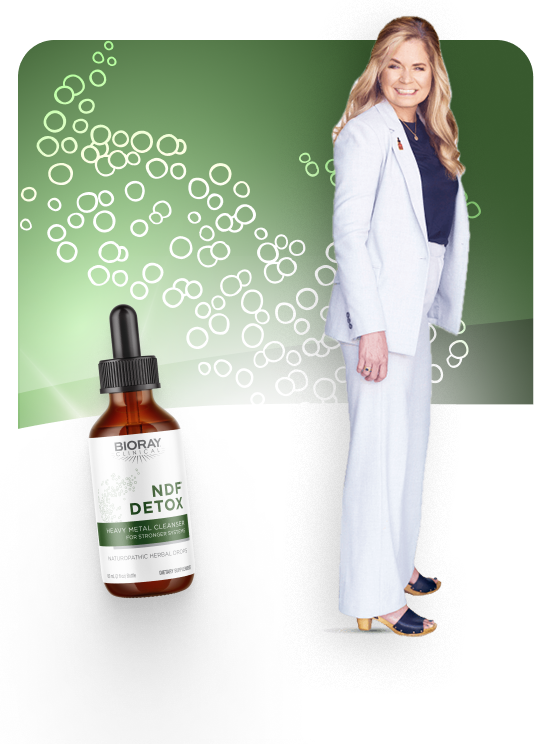New BIORAY Kids Formula For Lung and Immune Stress

By Stephanie Ray, BCN Board Certified Naturopath & Mom
Being under the weather is tough, especially when you’re a kid. That’s why we’ve brought something special out of the family apothecary at BIORAY®. We are pleased to introduce NDF Immune® formula for times of immune and lung stress for children. High in antioxidants and adaptogenic ingredients NDF Immune® helps our kids immune system fight and also stay balanced at the same time.
In 1999, 6-year-old Maxwell Ray and his father Dr. Timothy Ray, OMD, made a wellness formula for children. Today, the formula has been modified with the help of mom, Stephanie Ray, BCN, with more Chinese herbs known for bringing the immune system into balance. And naturally, as part of our kids line, NDF Immune®, includes NDF, Natural Detox Factors, a binding agent for all the yucky things we don’t want in our kids bodies.
Featuring camu camu, blueberry, cranberry, and elderberry fruit concentrates along with traditional Chinese adaptogenic herbs; NDF Immune® has been tinctured to give your child the trusted support they need when they are experiencing lung or throat issues, or overall body discomfort.
We’re happy to bring you these ancient and wonderful Chinese herbs mixed with stellar immunity fruit extracts!
- White Mulberry (Morus Alba) has demonstrated numerous beneficial activities, including antioxidant, neuroprotective, and immunomodulative impacts on the body. It’s known mostly for it’s ability to dispel heat and moistens the lungs.*¹
- Fritillaria herb is particularly useful for all types of coughs, moistening dry mucus membranes, and resolving phlegm.*²
- Trichosanthes root improves the function of the immune system and is especially helpful in treating conditions manifested by heat.*³
- Houttuynia maintains respiratory health by it's inhibitory effects. Naturally high in Quercetin 3-rhamnoside, houtuynia is shown to be effective for seasonal issues. It is also an immune modulator, liver & neuroprotective.*⁴
- Reishi Mushroom contains peptides, and triterpenoids, which provide protection for the lungs as well as has various minerals, vitamins, and amino acids. A key characteristic of Reishi mushroom polysaccharides is that it has an immunomodulatory impact on the body.*⁵
- Chen Pi (Orange citrus peel) reduces cough and eases discomfort in the chest and diaphragm.*⁶
- Skullcap herb is known in traditional Chinese herbalism to helps with sleeplessness, heat in the lungs as well as protects the liver (hepatoprotective).*⁷
- Ophinopongonis is an herb known in traditional Chinese medicine for its ability to clear heat, dryness, and irritability.*⁸
- Chlorella (micronized) is a potent biological response modifier on immunity. It increases natural killer cell activity and produces interferon-γ and interleukin-12 as well as interleukin-1β, the Th-1 cell-induced cytokines in healthy people.*⁹
- Camu Camu a natural source of vitamin C, has 25-50 times more than oranges, has a variety of antioxidants called withanolides that kept bad bugs from growing in one study, B vitamins, minerals, calcium, phosphorus, and iron.*¹⁰
- Cranberry contains antioxidants like proanthocyanidins, flavonoids, vitamins C and A. It is also rich in minerals like copper, manganese, and potassium. These compounds help reduce oxidation and strengthen the immune system. Proanthocyanidins also kill the bad bugs that stick to the inside of the body.*¹¹
- Blueberry is high in Vitamins C, K, manganese, and other trace nutrients and have been shown to directly increase antioxidant levels in the body.*¹²
- Elderberry is a potent antioxidant, that decreases the duration and symptoms of seasonal symptoms, as well as supporting later stage symptoms in double-blind placebo studies.*¹³
The positive impact of the individual herbs in NDF Immune® are well documented, however, it’s the synergistic effect of this specific tincture that has the amazing immunity effects for helping our kids.
¹ The Mulberry (Morus alba L.) Fruit-A Review of Characteristic Components and Health Benefit. J Agric Food Chem. 2017 Dec 6;65(48):10383-10394 https://pubmed.ncbi.nlm.nih.gov/29129054/
² Phytochemical and Biological Research of Fritillaria Medicinal Resources. Medicinal Plants Chemistry, Biology and Omics 2015, Pages 137-170. https://www.sciencedirect.com/science/article/pii/B9780081000854000049
³ Herbs & Botanicals: Trichosanthes Root (Tian Hua Fen). Acupuncture Today https://www.acupuncturetoday.com/herbcentral/trichosanthesroot.php
⁴ A Current Update on the Phytopharmacological Aspects of Houttuynia cordata. Pharmacogn Rev. 2014 Jan-Jun; 8(15): 22–35 https://www.ncbi.nlm.nih.gov/pmc/articles/PMC3931198/
⁵ Antiinflammatory and Immunomodulating Properties of Fungal Metabolites. Mediators Inflamm. 2005 Jun 9; 2005(2): 63–80. https://www.ncbi.nlm.nih.gov/pmc/articles/PMC1160565/
⁶ Herbs & Botanicals: Citrus peel (chen pi). Acupuncture Today. https://www.acupuncturetoday.com/herbcentral/citruspeel.php
⁷ Scutellaria baicalensis, the Golden Herb From the Garden of Chinese Medicinal Plants. Sci Bull (Beijing). 2016; 61(18): 1391–1398.https://www.ncbi.nlm.nih.gov/pmc/articles/PMC5031759/
⁸ Ophiopogon japonicus—A phytochemical, ethnomedicinal and pharmacological review. Jan. 2016 Journal of ethnopharmacology 181. https://www.researchgate.net/publication/292185801_Ophiopogon_japonicus-A_phytochemical_ethnomedicinal_and_pharmacological_review
⁹ Beneficial Immunostimulatory Effect of Short-term Chlorella Supplementation: Enhancement of Natural Killer Cell Activity and Early Inflammatory Response (Randomized, double-blinded, placebo-controlled trial) https://www.ncbi.nlm.nih.gov/pmc/articles/PMC3511195/
¹⁰ Antimicrobial constituents of peel and seeds of camu-camu (Myrciaria dubia). Biosci Biotechnol Biochem 2017 Aug;81(8):1461-1465. doi: 10.1080/09168451.2017.1320517 https://pubmed.ncbi.nlm.nih.gov/28475419/
¹¹ Absorption of anthocyanins from blueberries and serum antioxidant status in human subjects. J Agric Food Chem. 2002 Dec 18;50(26):7731-7. doi: 10.1021/jf020690l https://pubmed.ncbi.nlm.nih.gov/12475297/
¹² The effect of wild blueberry (Vaccinium angustifolium) consumption on postprandial serum antioxidant status in human subjects. Br J Nutr. 2002 Oct;88(4):389-98. doi: 10.1079/BJN2002665 https://pubmed.ncbi.nlm.nih.gov/12323088/
¹³ Procyanidin, anthocyanin, and chlorogenic acid contents of highbush and lowbush blueberries. J Agric Food Chem. 2012 Jun 13;60(23):5772-8. doi: 10.1021/jf203812w. https://pubmed.ncbi.nlm.nih.gov/22175691/


